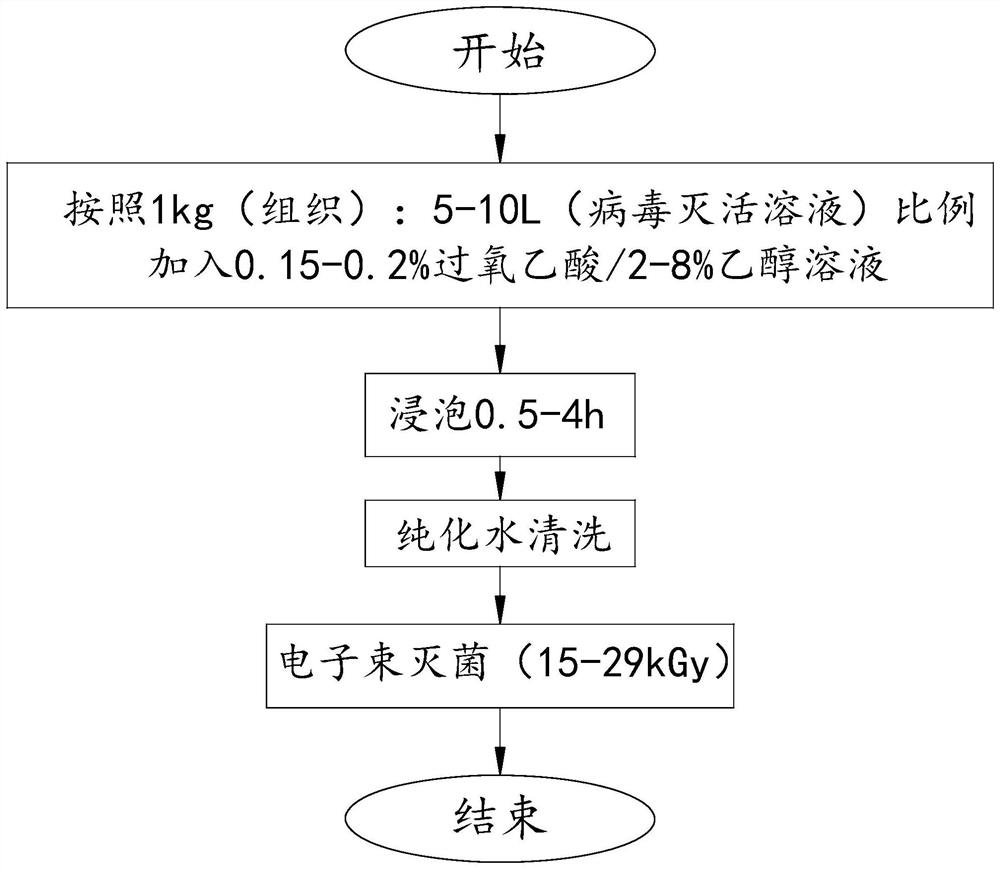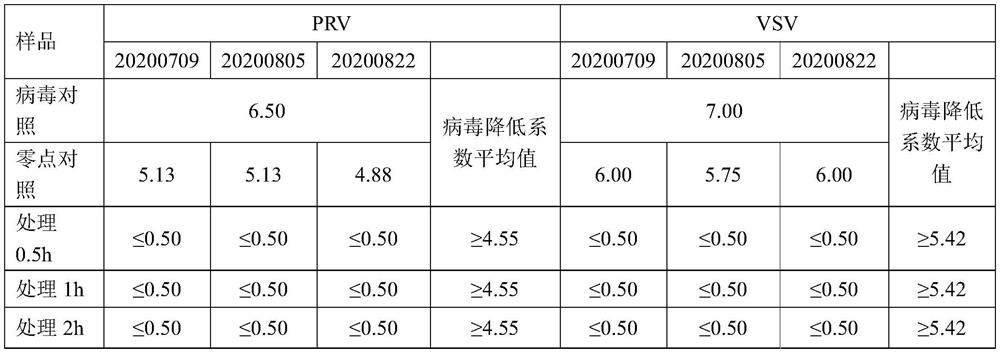Method for inactivating biological soft tissue virus
A biological soft tissue inactivation technology, applied in the field of biological soft tissue virus inactivation, can solve the problems of long time, cumbersome steps, and complicated inactivation steps, and achieve the effect of short time and simple operation
- Summary
- Abstract
- Description
- Claims
- Application Information
AI Technical Summary
Problems solved by technology
Method used
Image
Examples
Embodiment 1
[0025] 1. Step 1, virus selection: select pseudorabies virus (PRV), vesicular stomatitis virus (VSV), porcine parvovirus (PPV) and encephalomyocarditis virus (EMCV). The information of the above four viruses is shown in Table 1 :
[0026] Table 1 The information of 4 kinds of porcine indicator viruses
[0027] virus name Genome Capsule tolerance Pseudorabies virus (PRV) dna Have middle Vesicular stomatitis virus (VSV) RNA Have Low Porcine parvovirus (PPV) dna none very high Encephalomyocarditis virus (EMCV) RNA none middle
[0028] 2. Step 2 and Step 3, soaking in peracetic acid-ethanol:
[0029] 0.15-0.2% peracetic acid and 2-8% ethanol solution soaked in the effect of virus inactivation enveloped virus, specifically as shown in Table 2:
[0030] Table 2 The effect of peracetic acid-ethanol solution inactivating enveloped virus (lgTCID50 / 0.1mL, note: the minimum detection limit is 0.5lgTCID 50 / 0.1mL)
[0031...
PUM
 Login to View More
Login to View More Abstract
Description
Claims
Application Information
 Login to View More
Login to View More - R&D
- Intellectual Property
- Life Sciences
- Materials
- Tech Scout
- Unparalleled Data Quality
- Higher Quality Content
- 60% Fewer Hallucinations
Browse by: Latest US Patents, China's latest patents, Technical Efficacy Thesaurus, Application Domain, Technology Topic, Popular Technical Reports.
© 2025 PatSnap. All rights reserved.Legal|Privacy policy|Modern Slavery Act Transparency Statement|Sitemap|About US| Contact US: help@patsnap.com



